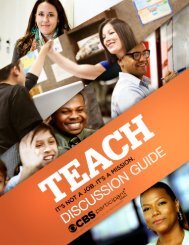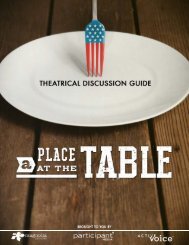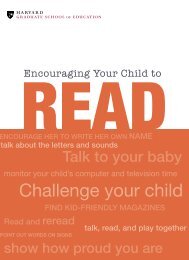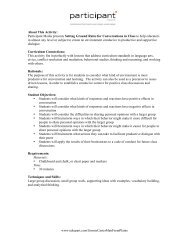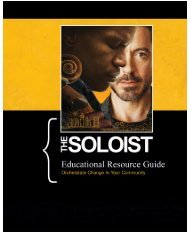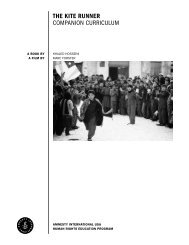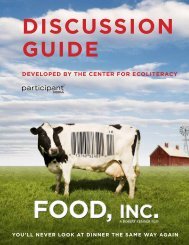ELABORADA POR: CENTER FOR ECOLITERACY - TakePart
ELABORADA POR: CENTER FOR ECOLITERACY - TakePart
ELABORADA POR: CENTER FOR ECOLITERACY - TakePart
- No tags were found...
You also want an ePaper? Increase the reach of your titles
YUMPU automatically turns print PDFs into web optimized ePapers that Google loves.
RecursosPara obtener información adicional sobre las cuestiones y los temas presentados enla película:ReferenciasCenter for Ecoliteracy (2008). Big ideas: Linking Food, Culture, Health, and theEnvironment Berkeley: Learning in the Real World. www.ecoliteracy.org.Garcia, Deborah Koons (2004). The Future of Food Lily Films.Organización de las Naciones Unidas para la Agricultura y la Alimentación (2008).El estado mundial de la agricultura y la alimentación, 2008—Biocombustibles:perspectivas, riesgos y oportunidades. http://www.fao.org/publications/sofa/esOrganización de las Naciones Unidas para la Agricultura y la Alimentación (2003–2004). El estado mundial de la agricultura y la alimentación, 2003–2004 —Labiotecnología agrícola: ¿una respuesta a las necesidades de los pobres?http://www.fao.org/docrep/006/y5160s/y5160s00.htmParticipant Media (2009). Food, Inc: How Industrial Food is Making Us Sicker, Fatter andPoorer—and What You Can Do about It. Weber, Karl, editor. Nueva York: Public Affairs.Pollan, Michael (2008). In Defense of Food: An Eater’s Manifesto. Nueva York: Penguin.Pollan, Michael (2006). The Omnivore’s Dilemma: A Natural History of Four Meals.Nueva York: Penguin.Pringle, Richard (2005). Food, Inc.: Mendel to Monsanto—The Promises and Perils ofthe Biotech Harvest. Simon and Schuster.Richardson, Jill (2009). Recipe for America: Why our Food System is Broken and WhatWe Can Do To Fix it. Brooklyn, NY: Ig Publishing.96Food, Inc. GUÍA DE DEBATE©Participant Media



